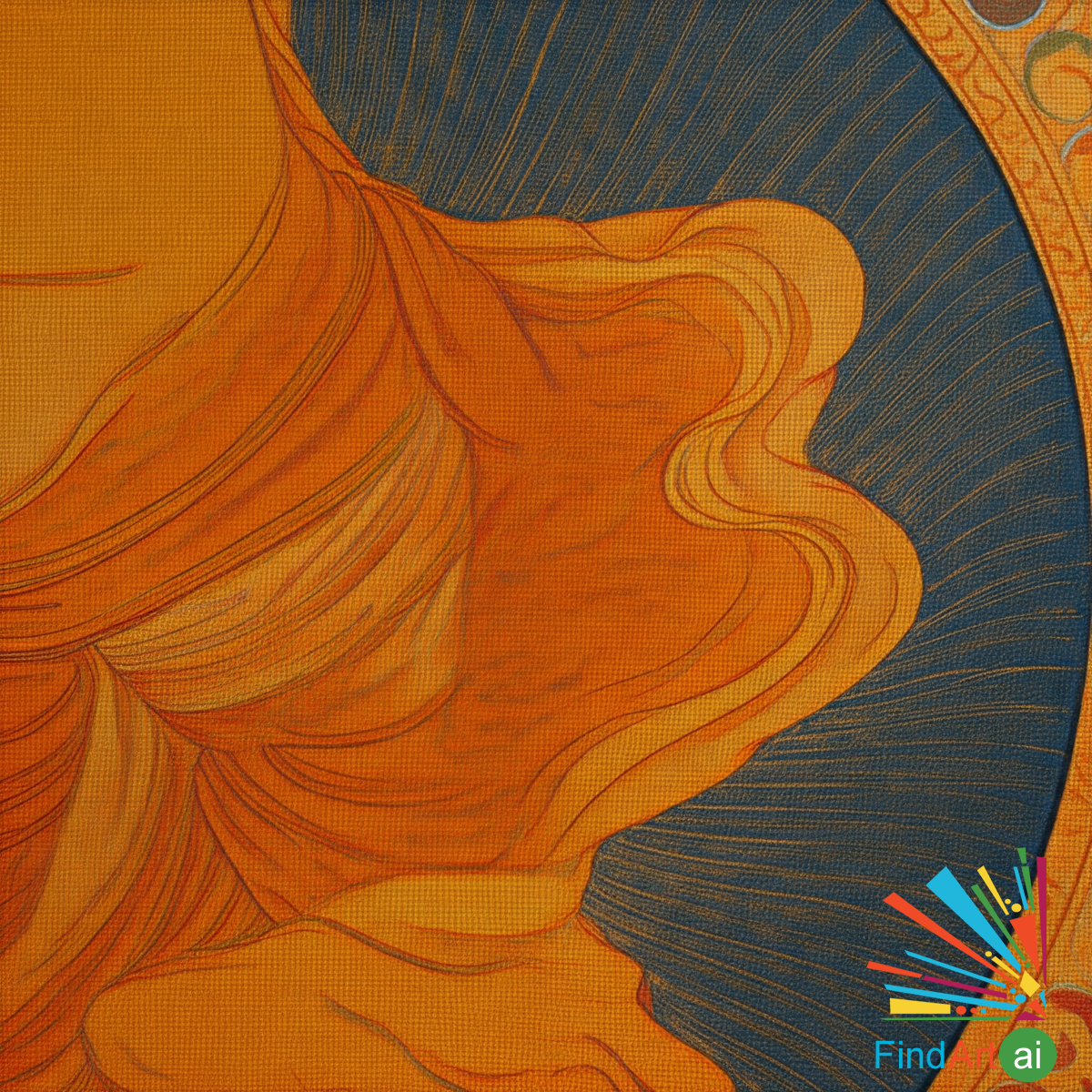Tibetan Thangka Painting
Tibetan Thangka Painting is a traditional art form rooted in Tibetan Buddhism, characterized by intricate designs, vibrant colors, and spiritual themes. Thangkas are religious scroll paintings that serve both as teaching tools and objects of meditation, typically depicting Buddhist deities, mandalas, and important spiritual narratives.
Key Characteristics of Tibetan Thangka Painting
- Spiritual and Religious Themes
- Thangkas often depict key figures in Tibetan Buddhism, such as Buddha Shakyamuni, bodhisattvas, and various deities. They also illustrate important teachings and principles of Buddhism, serving as visual aids for meditation and study.
- Intricate Detail
- Thangkas are known for their meticulous attention to detail, with fine lines and intricate patterns. Artists spend considerable time on each piece, often incorporating elaborate backgrounds and symbolic motifs.
- Use of Color
- Vibrant colors are a hallmark of Thangka painting, with specific hues chosen for their symbolic significance. Gold, red, blue, and green are commonly used to convey different aspects of Buddhist teachings and spiritual qualities.
- Symbolism and Iconography
- Each element in a Thangka is laden with meaning. For example, the presence of specific deities, symbols (like the lotus or mandala), and colors all carry spiritual significance, reflecting teachings and beliefs in Tibetan Buddhism.
- Mandalas and Cosmological Representations
- Many Thangkas feature mandalas, which represent the universe and the spiritual journey. These intricate geometric designs serve as tools for meditation and visualization.
- Layering Techniques
- Artists often employ a layering technique, using mineral-based paints and natural pigments to achieve depth and richness in color. The use of gold leaf may also enhance the luminosity of the artwork.
- Textual Elements
- Thangkas may include inscriptions or texts, often in Tibetan script, which provide context or further explanation of the depicted scenes and teachings.
- Portable and Functional
- Thangkas are traditionally painted on cotton or silk and mounted on scrolls, making them portable. They are used in religious rituals, teachings, and personal meditation practices.
Common Themes in Tibetan Thangka Painting
- Buddhas and Bodhisattvas: Representations of enlightened beings, each embodying different qualities and teachings.
- Mandalas: Geometric representations of the universe used for meditation and spiritual practice.
- Deity Practices: Thangkas often illustrate specific practices and rituals associated with particular deities, guiding practitioners in their spiritual development.
- Life of the Buddha: Scenes depicting the life and teachings of Buddha Shakyamuni, emphasizing key events and teachings.
Notable Styles and Schools
- Kagyupa: Focuses on teachings from the Kagyu school, often featuring specific lineages and key figures.
- Sakya: Known for its detailed and intricate representations of cosmology and teachings specific to the Sakya tradition.
- Gelug: Reflects the teachings of the Gelug school, often emphasizing clarity and precision in depiction.
Tibetan Thangka Painting is a deeply spiritual and culturally rich art form that serves as both a visual representation of Buddhist teachings and a practical tool for meditation. Through its intricate details, vibrant colors, and profound symbolism, Thangka art encapsulates the essence of Tibetan Buddhism, fostering spiritual growth and understanding among practitioners. This art form continues to thrive, preserving and promoting the teachings and cultural heritage of Tibetan Buddhism.
Tibetan Thangka Paintings with Life of the Buddha Theme
Tibetan Thangka Paintings with the Life of the Buddha theme are visual and spiritual representations...

